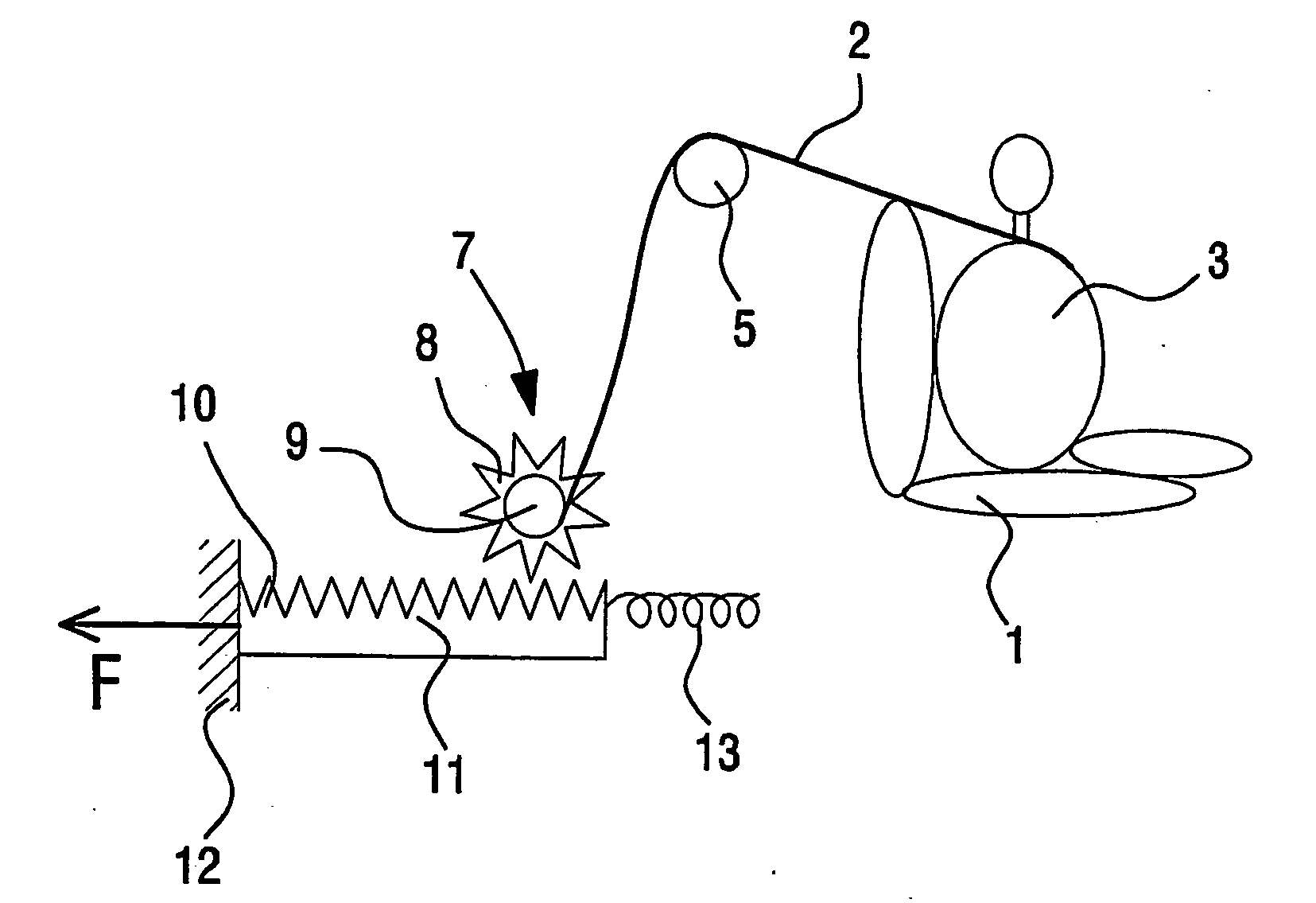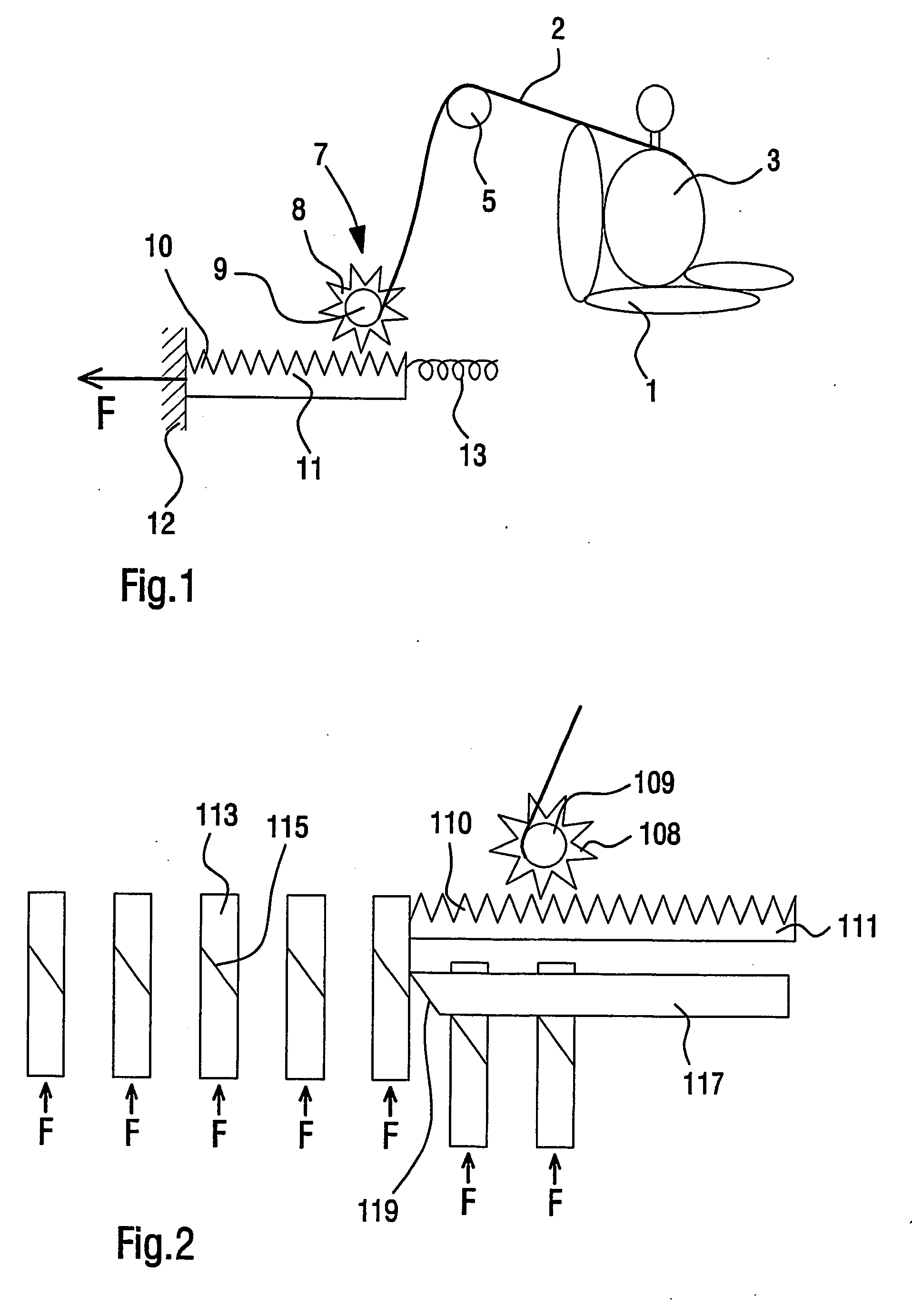Method of Establishing Belt Pullout in an Occupant Restraint System for Vehicles and an Occupant Restraint System for Vehicles
a technology for occupant restraint systems and vehicles, which is applied in the direction of pedestrian/occupant safety arrangements, vehicular safety arrangments, safety belts, etc., can solve the problem and achieve the effect of limited loading on vehicle occupants in the event of an acciden
- Summary
- Abstract
- Description
- Claims
- Application Information
AI Technical Summary
Benefits of technology
Problems solved by technology
Method used
Image
Examples
Embodiment Construction
[0026] A highly diagrammatic view of an embodiment of the occupant restraint system according to the invention is shown in FIG. 1. FIG. 1 shows a vehicle seat 1, a restraint or safety belt 2 and a vehicle occupant 3 sitting on the vehicle seat 1, with the safety belt 2 fitted. The safety belt 2 is designed in such a way that, in the event of an accident, it is firstly tensioned and locked in order to hold the vehicle occupant 3 back in the seat. That prevents the occupant 3 being displaced forwardly in a direction towards the vehicle dashboard (not shown). Furthermore under given conditions the belt 2 allows belt pullout in order to prevent injury to the vehicle occupant 3 by the safety belt.
[0027] The safety belt 2 is deflected in a direction towards a blocking and release unit by way of a deflection device which is arranged in or at the B-pillar of the vehicle and which for example can be in the form of a deflection roller or deflection stirrup.
[0028] The blocking and release un...
PUM
 Login to View More
Login to View More Abstract
Description
Claims
Application Information
 Login to View More
Login to View More - R&D
- Intellectual Property
- Life Sciences
- Materials
- Tech Scout
- Unparalleled Data Quality
- Higher Quality Content
- 60% Fewer Hallucinations
Browse by: Latest US Patents, China's latest patents, Technical Efficacy Thesaurus, Application Domain, Technology Topic, Popular Technical Reports.
© 2025 PatSnap. All rights reserved.Legal|Privacy policy|Modern Slavery Act Transparency Statement|Sitemap|About US| Contact US: help@patsnap.com



